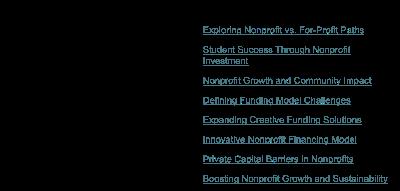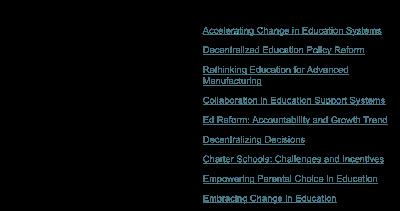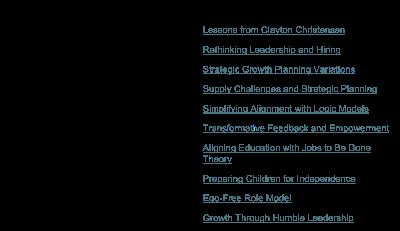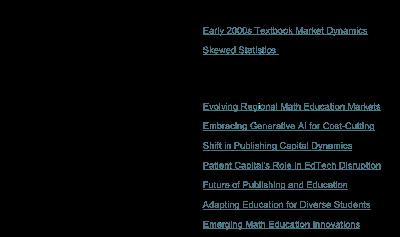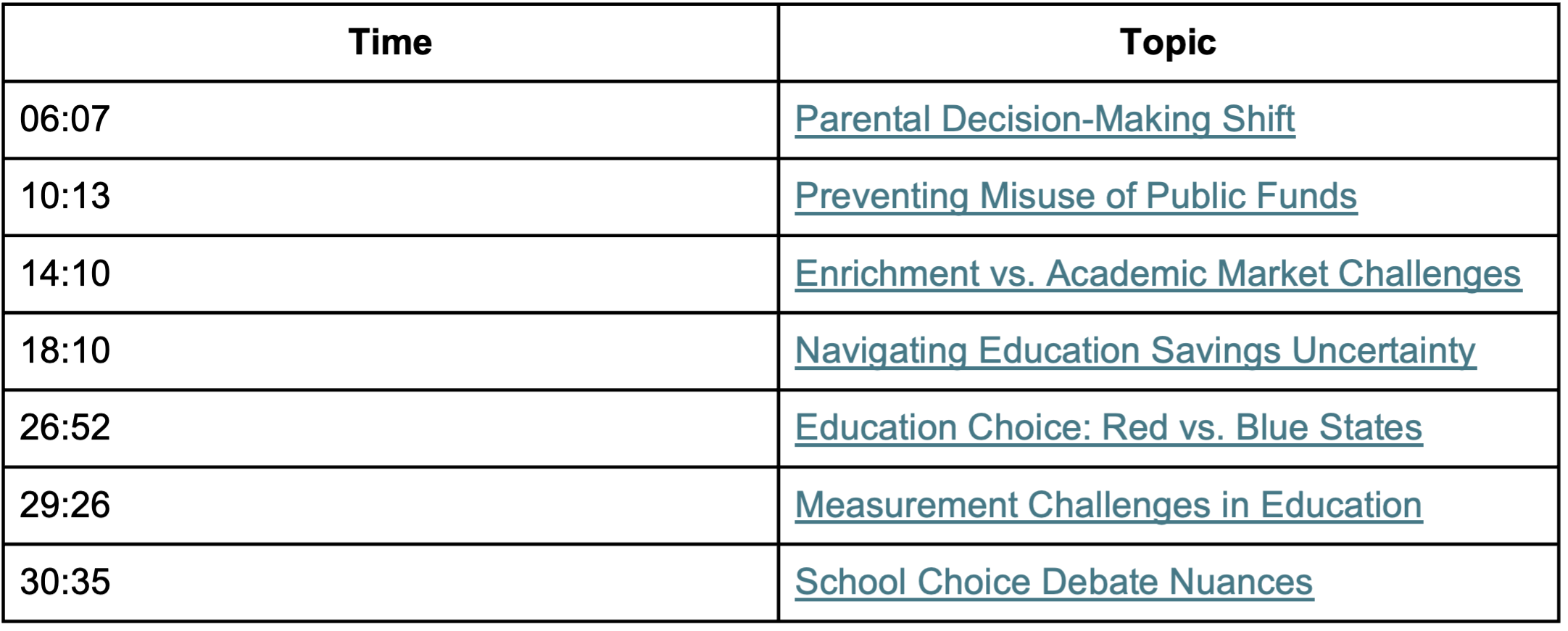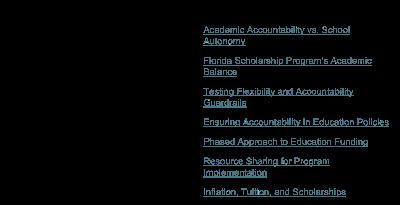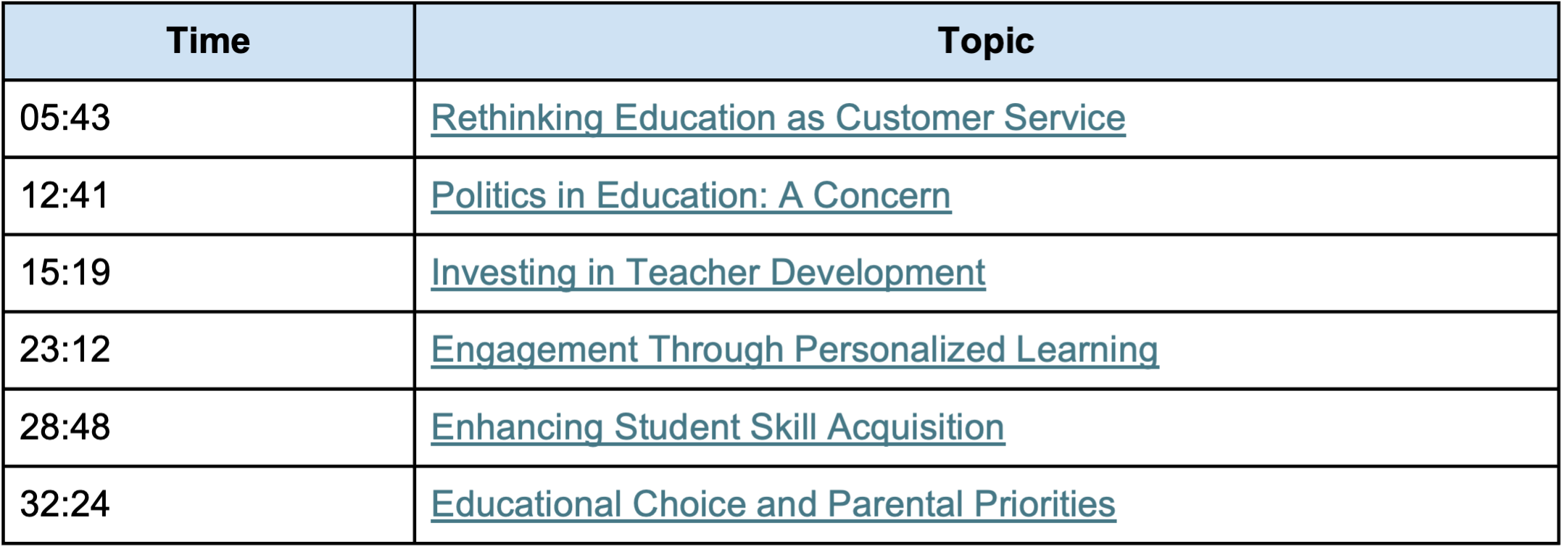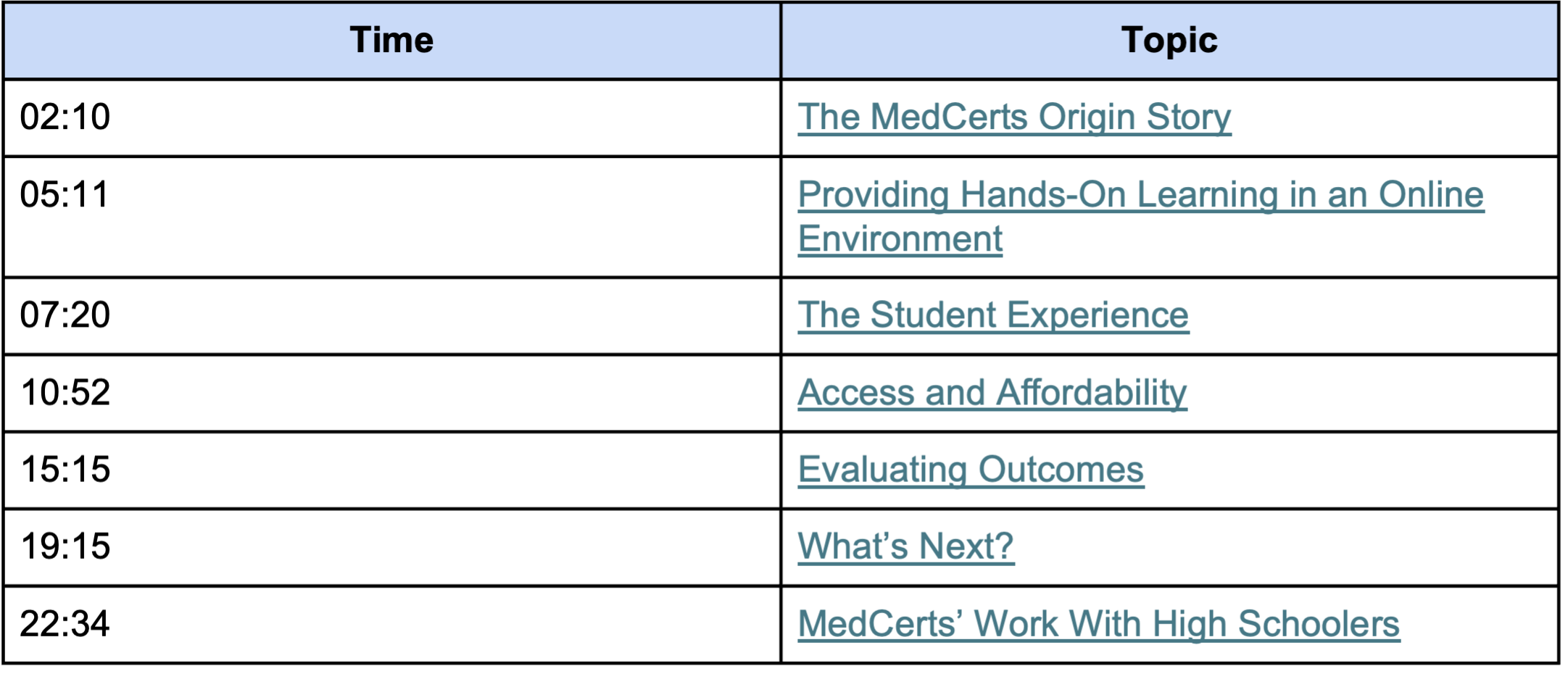From Passion to P&L: How a Microloan Program Is Helping Build Sustainable Microschools
Description
Bill Hansen, CEO of Building Hope, and Raphael Gang, Director of K12 Education at Stand Together Trust, joined me to discuss the launch of a pioneering microloan fund specifically designed for microschool founders. We explored the goals, mechanics, and early learnings from the pilot program, which offers low-interest startup loans to help microschool entrepreneurs navigate financial and facility challenges in the early stages. Our conversation highlighted the critical need for business fundamentals and sustainability within these innovative educational ventures, the vital role of technical assistance, and the importance of building scalable, sector-wide support for nontraditional school models.
Michael Horn
Welcome to the future of Education. I'm Michael Horn. You're joining the show where we're dedicated to creating a world in which all individuals can build their passions, fulfill their potential, and live lives of purpose. And today we're going to have a conversation with two leaders behind a relatively new micro loan program that is designed to support what I'll call the supply side of microschools. But we'll unpack that, I suspect, a little bit as we get in this conversation. Before we do that, let me actually introduce our two guests. We have none other than Bill Hanson. He's the president and CEO of Building Hope.
Bill, good to see you.
Bill Hansen
Good to see you, Michael. Thank you.
Michael Horn
Yeah, absolutely. And then we have Raphael Gang. Raphael is the director of K12 education at Stand Together Trust. Rafael, good to see you.
Raphael Gang
Thanks for having me.
Microschool Program Partnership
Michael Horn
It's great. Yeah, no, you bet. So let's dive in with the mechanics, basics, just so people know what we're talking about. As I understand it, this is the first of its kind fund for microschool founders. It launched with $675,000, I believe, in funding from Stand Together Trust with support from the Beth and Ravenel Curry Foundation, I think. Is that right? And then it's powered by Building Hope and it's essentially a low-interest loan program. And so I'd love to get the basics of this, like what are the loans for, how much are we talking, what's the structure of those loans, how many applicants did you get, how many did you give out, and so forth.
So maybe, Bill, why don't you lead us off and then Raphael, if anything to add, you can jump in on this.
Bill Hansen
Thank you, Michael, and just really appreciate the partnership with Raphael and with the Stand Together Trust. It's really been a pretty intense several months here getting this really, we're calling it a pilot or a demonstration program established to really help us learn a lot about this marketplace and the needs. And, you know, just with Building Hope's history in the public charter school movement, mostly, you know, the biggest barrier has always been both the financing and the facilities, and that is on steroids here with the microschool program. And so really the, you know, I really feel like we're in a learning process here to really, you know, help us validate those challenges that these entrepreneurs around the country are making and to really help solve the greatest needs that they have. And really the barriers to entry, which really have been, the logistics, the housing, if you will, and also just really the startup cost for them.
Raphael Gang
Yeah.
Michael Horn
And so let's talk about the loan itself. Raphael, why don't you jump in there? Yeah, yeah.
Raphael Gang
I mean, we were really excited. I mean, we spent two years looking for the right partner for this. So I would double down on Bill's, the appreciation for what Building Hope has done over the past six months or so, eight months, to build out the loan fund. And it's been a real process and you need a lot of trust and a lot of partnership to do something that's as ambitious and fast moving as this project has been. So, I mean, the loan fund, you know, we put out a very soft request to folks. We didn't do some big major advertising blitz. We went out through a network of partners that we talked to and we said, you know, who is looking for affordable capital, essentially? And we really were looking.
I think Bill makes a really good point there if we were looking to learn about the market as much as we were learning to help founders of microschools. We know that these microschools are out there. We are seeing through organizations like the national microschooling center and vela.org just tremendous growth in them. But we don't really have a grip on, well, what are their finances look like? What does their growth strategy look like? What are their needs? And so I was having a lot of conversations with folks where I'd say, hey, what do you need? And a lot of folks would come to us and say, I need capital. I need money. I need money to get started. Or I'm in my early days of my first few years of operating. I need capital.
Cash flow or ESA programs or voucher programs are coming online, but I need a little cash flow because they're on a delayed payment, things like that. So we really tried to structure the loan fund in a way where it acknowledged the reality of these folks that are on the ground and what their needs are. So we're not asking for immediate repayment of things. We went out and talked to those folks and we said, what's a loan? What's a timeline that makes sense and when should the payments happen? And Bill can talk more about the details of that, but we came in at 3% interest rate, which is a very generous interest rate, as anyone in the finance industry can tell you. But a lot of it was about like, well, we want to see who's out there and we want to learn about them. And so Bill and his team have done an amazing job of collecting that data and now using it to inform what we're doing. We're really excited.
I think we're on track to make about eight or nine loans by the end of the process. We'll probably still have a little bit of money left by the end of it, but I think we're in a really great place, to really get the money out the door. But, but as well, like really inform kind of where we go from here. Does that answer your question?
Michael Horn
Yeah, that does. So that. And you sort of teed up the next question, which is I think you got 53 applicants. So you're talking eight or nine folks will get loans.
Raphael Gang
Yep.
Michael Horn
What are they going to use the capital for? What are those repayment terms? How big are the loans? Like what, what order of magnitude are we talking about here? Bill, you want to take it?
Startup Loan Facilitation for Entrepreneurs
Bill Hansen
Sure. Well, the loans are, you know, probably going to be in the 25 to $50,000 range. And again, these are really startup costs that these individuals and entrepreneurs are needing to get through all of the regulatory processes, all of the onboarding of, of students and whatnot. So. And really the facilities is probably still the, I would say, the predominant need for it. And you know, I just really would also maybe just echo what Raphael was saying about the intersection of philanthropy and you know, we're a non profit organization, but we have, you know, three businesses that are, you know, we're the biggest financial advisor in the charter school business. We've got a nonprofit subordinated lending program, do a lot of work with the credit enhancement program for the Department of Education, the Small Business Administration, and really just trying to help navigate, you know, through these processes that they've probably never done before and you know, maybe just with their local banker and so, you know, trying to bring, you know, get the lowest cost loans available to them is really, I think one of the benefits of the partnership with philanthropy and a nonprofit organization involved in the lending business.
Raphael Gang
Yeah, I think we've got, you know, I think we had 258 application or interest forms. Interest forms. We had 100 folks start at the applications. We had 53 full applications that came through the process. And it looks like we'll get to about 8 to 10 loans distributed and they're going to be in that range that Bill talked about. We deliberately really said, let's keep the loan dollar amount low. These are microschools, they should be micro loans, so to speak. And we really felt like we didn't want to be a, we wanted to see how far we could stretch those dollars and really can that money be catalytic, especially at the earliest stages for folks.
But we saw that a lot of the challenges that are coming through with that were, were really about the business practices that founders were going through. There were challenges with facilities. Facilities are no doubt a real challenge that a lot of microschool founders deal with, especially at the front end of their process. But I think a lot of what we're seeing in the process has been the business fundamentals. And how do you help schools make sure that they have the right pricing strategy, make sure that their tuition is actually going to lead them to net income and that they are, they have good accounting practices. And what I think Bill and my team probably have said, we've said this to each other so many times, it's kind of hilarious at this point. But how much this reminds us of the early days of charter schools where there's so much energy and there's so many ideas and ther


